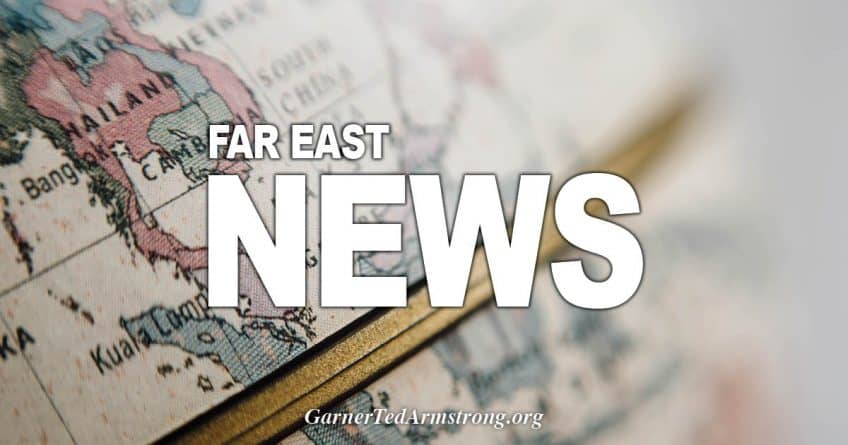
Vice President Pence in Kalispell, Mont., on Nov. 5. (Justin Franz/Flathead Beacon/AP)
More than a dozen Pacific nations will convene in the capital of Papua New Guinea next week, where Vice President Pence will lay out the next phase of the Trump administration’s ever evolving Asia strategy. His task is to convince the countries of Southeast Asia that the United States and its allies can offer them better options than capitulation to Chinese economic regional dominance.
With the midterm elections behind it, the Trump administration is turning to foreign policy in a major way. President Trump will visit Paris later this week and Argentina for the Group of 20 summit at the end of the month. Secretary of State Mike Pompeo is trying to arrange a second summit between Trump and North Korean leader Kim Jong Un, while Pence, who rolled out the new U.S. approach to China last month, is headed to Asia for a week-long tour that will culminate in a major speech on the administration’s Indo-Pacific strategy at a meeting of Asia-Pacific Economic Cooperation (APEC) leaders on a ship off the coast of Port Moresby.
Pence’s whirlwind Asia tour — his third since taking office — will also take him to Japan, Singapore and Australia, representing the United States at the Association of Southeast Asian Nations (ASEAN) summit and the East Asia Summit. These three conferences comprise the most important diplomatic gatherings of Asian leaders each year. Pence will also meet with the leaders of Japan, South Korea, Vietnam, Australia, Malaysia and New Zealand along the way.
His trip comes at a crucial juncture in the U.S. relationship with countries in Southeast Asia and the Trump administration’s strategy on China.
“He’s going to the region with an affirmative message to talk about what we and our partners are doing across the region to reinforce the idea of a free and open Indo-Pacific,” a senior administration official told me.
The idea is to put meat on the bone of the Asia strategy Trump unveiled at last year’s APEC meeting in Vietnam. Pence is not going to the region to criticize the Chinese government directly, as he did in his recent speech. The plan is to argue that the U.S. vision for the region is better for those countries economically and politically — and that the U.S. commitment there is real.
Whether the countries of Southeast Asia believe the Trump administration has the capability or focus to put forth a real alternative to China’s comprehensive regional expansion is another question. Beijing has been flooding Southeast Asia with billions of dollars in infrastructure projects and other investments as part of its Belt and Road Initiative. So far, the United States’ counterproposals have been light on actual resources.
Officials said the vice president is preparing announcements that will add more substance to the U.S. argument that private investment by American companies — along with U.S. government support for governance and technological infrastructure development — is healthier than China’s often predatory lending schemes.
“One Belt, One Road is a one-way street,” the senior administration official said. “It is a political and geostrategic ploy by the Chinese government to insinuate themselves into the politics of countries and advance military basing options under the guise and rubric of development assistance.”
There’s good reason to think Southeast Asian nations are open to the U.S. pitch. The new governments in Malaysia and the Maldives are struggling to undo the huge and hugely corrupt infrastructure deals their predecessors struck with Beijing. Chinese projects in Pakistan and Sri Lanka have shown that taking massive loans on unfair terms can have grim consequences for a country’s financial and territorial sovereignty.
Southeast Asian nations don’t want to be forced to choose between China and the United States, and many are still sore about Trump exiting the Trans-Pacific Partnership. When it comes to Asia, Trump has been more focused on tariffs than making deals. But on infrastructure and investment, the United States has more to offer since Congress passed the Build Act, which could provide up to $60 billion for private development financing.
Offering real competition to Beijing’s massive investment scheme is not just about economics, especially not for the Chinese government. The Chinese Communist Party uses these programs to cultivate and corrupt regional elites, which then enables them to neuter democratic institutions and roll back liberal norms.
“China’s willingness to invest heavily in developing countries irrespective of good governance bolsters the fortunes of illiberal leaders who take credit for Chinese investment and dilutes Western leverage to press for human rights and rule of law reforms,” said David Shullman, senior adviser at the International Republican Institute.
In other words, economics is emerging as the key battleground in the greater competition between China and the world’s democracies over who will decide the regional and world order for the next decades. The Trump administration has correctly articulated the strategic challenge, but now the United States must put its money where its mouth is.
Read more from Josh Rogin’s archive, follow him on Twitter or subscribe to his updates on Facebook.









